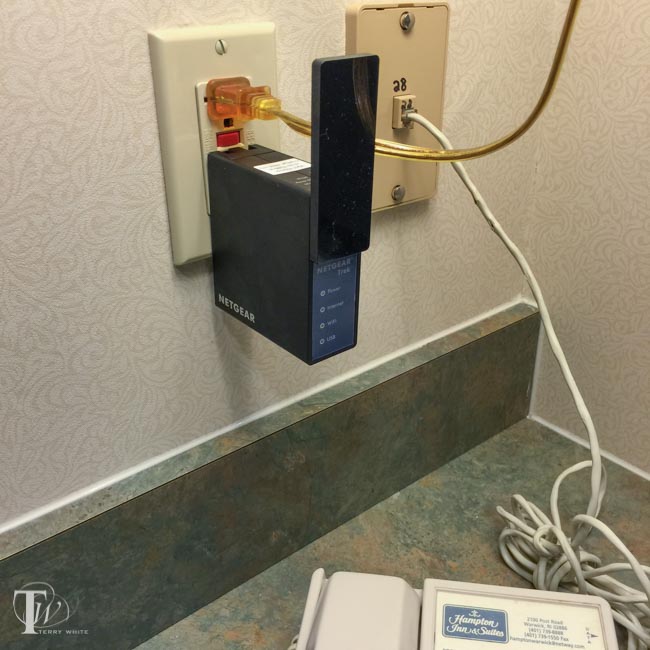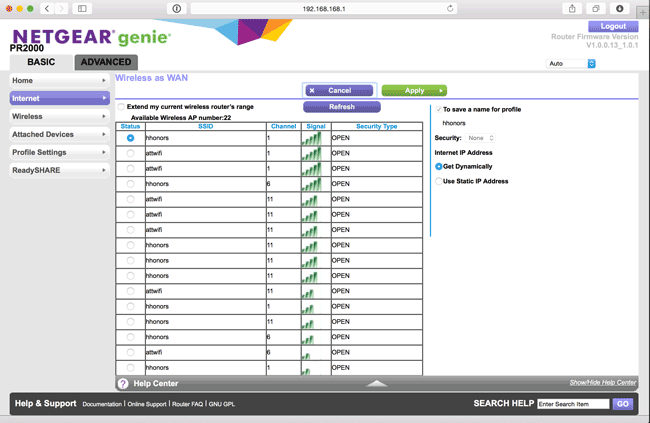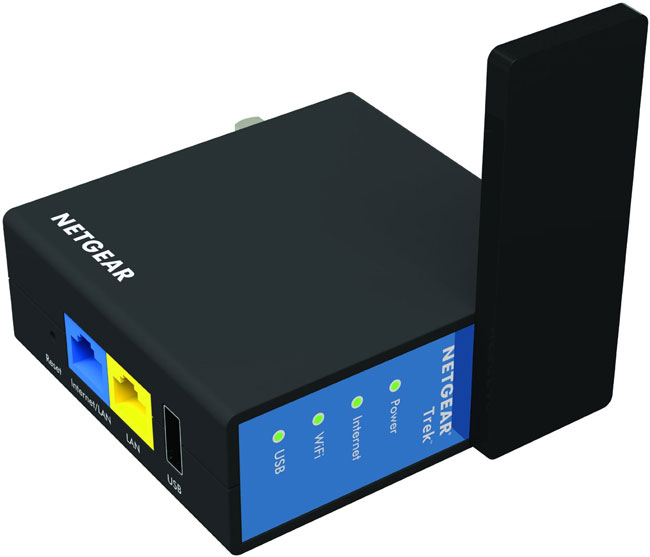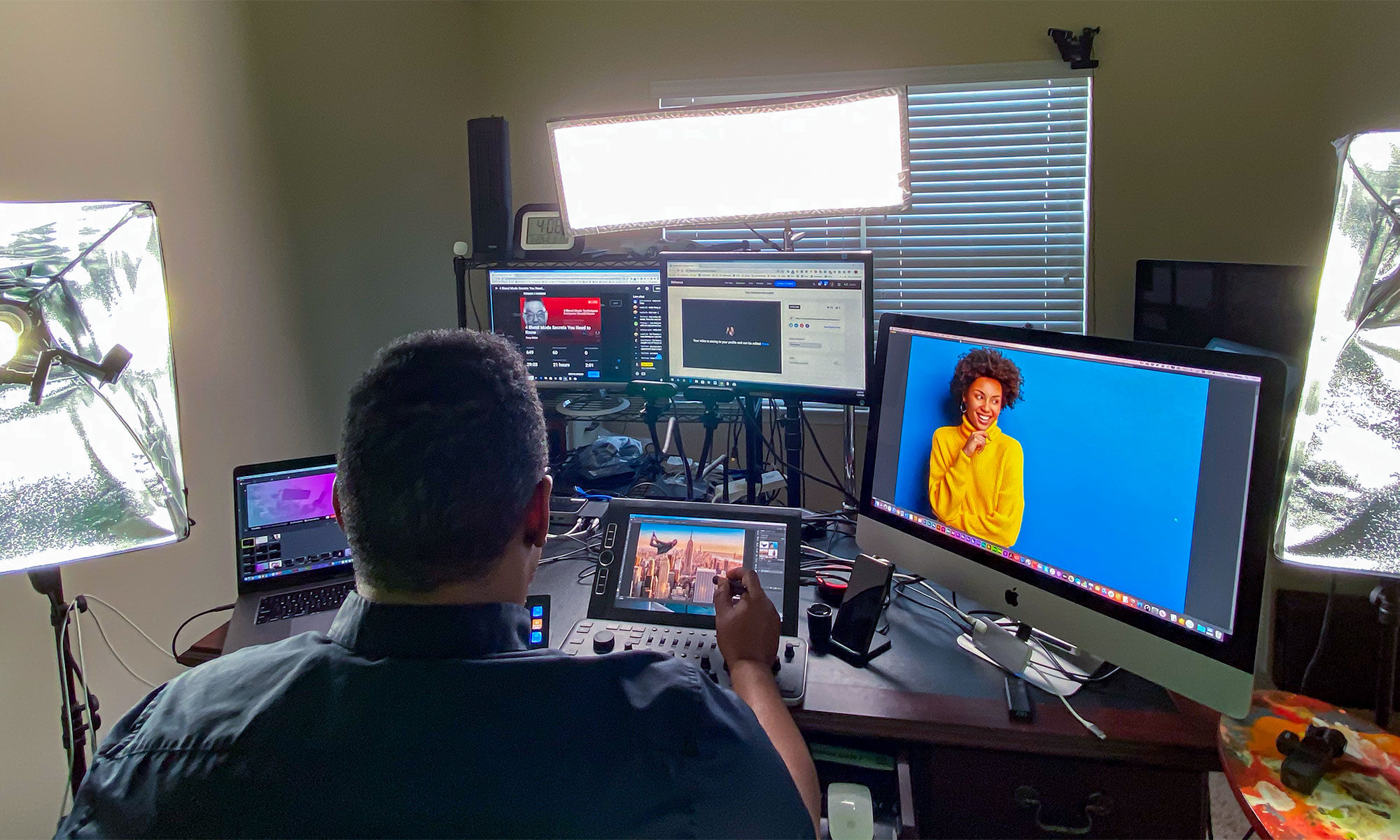
I’ve traveled religiously with an Apple AirPort Express Base Station for years. It’s portable, it’s fast, and pain free in terms of setup. It just works. However, there’s one thing that made me look for a new solution. More and more hotel rooms and locations that I’m in on the road are now WiFi Only, meaning that newer hotel rooms are no longer equipped with wired ethernet jacks. Even those rooms that do have the wired ethernet ports are often disconnected. Sure I could just connect my devices to the WiFi network offered but that offers a set of challenges that I was avoiding by bringing my own router in the 1st place. When you connect to the hotel WiFi (free or paid) chances are each device has to go through a sign-in, login, accept the terms process. Usually this login is only good on average for up to 24 hours before having to repeat the process for each device each day. On the other hand if I connect my own WiFi router (hotspot) then I use one device to sign on/login etc. and all the other devices on my network can surf freely without the need to have to sign on/login individually.
Why the AirPort Express is no longer the solution
The AirPort Express is great and even the newer form factor has grown on me, however the AirPort Express requires a wired connection to the internet in order to work. If I’m in a hotel with WiFi only the AirPort Express has to go back in my bag. Sure the AirPort Express can be used to extend an existing “AirPort network”, but I have yet to see a hotel equipped with AirPort Base Stations, let alone the access needed to make that kind of configuration work.
Netgear built the WiFi Travel Router I was looking for
The Netgear Trek N300 does the one extra thing I need. It allows you to connect to an existing WiFi network and then share that connection via the WiFi network that it creates. Having my cake and eating it too. It can work in either a wired or wireless setup. If there is an Ethernet jack in the room then the Netgear Trek N300 can plug into it and route it just like the AirPort Express. However, if there is only a WiFi network you can have the Trek N300 join it and share it creating your own private password protected WiFi hotspot for the rest of your devices/guests.
How does it work?
As you might expect the setup requires a couple of extra steps when connecting it to an existing WiFi network. The first thing you’ll do is simply configure it with a web browser to set up the wireless network for your devices to connect to. Let’s say for example you want to create a network called “Get off my LAN”. Once you set that up with a password you’re all set to travel. Once you get to your hotel room or other public WiFi area, just power the Trek N300 up using the built-in foldout plug or plug in a standard micro USB cable (it comes with it) and power it via USB. This is a very nice touch because I don’t have to have an extra free wall outlet available. I can power it using my Anker 40w 5 port USB charger/power source.

Now simply connect to it from any of your devices. Bring up your web browser and enter the address of your Trek N300. Signin with your admin password and from there you will see a list of the visible WiFi networks to choose from. Choose the public network that you wish to connect to and you will likely be prompted by the public WiFi’s login page. Login as you normally would if you were connecting to this network directly, but you are actually connecting the Trek N300 to it. Once you’ve successfully logged in or paid your Netgear Trek N300 will be online and able to route that WiFi connection to your private WiFi network “Get off my LAN” for all your other devices/guests to connect to.
This Router/Range Extender works GREAT, especially after I upgraded it to the latest firmware. Unfortunately it won’t speed up a painfully slow hotel WiFi connection, but it will make it less painful for you to use by eliminating device limits and multiple device logins. Also it will give you one more layer of security because all of your devices will be behind the Netgear firewall and not visible to the public WiFi network.
The Bottom Line

The Netgear Trek N300 didn’t disappoint. I’m using it this week on the road as I write this post from my room at a Hampton Inn. There are no ethernet ports here in the rooms and without the Trek N300 I would have had to connect each device to the hotel public WiFi and sign in each device separately. You get an extra Ethernet port on it to connect wired devices too.
Also when you compare the price to the AirPort Express it’s a no brainer.
You can get the Netgear Trek N300 on sale here.
They also have an iOS App to manage it that you can download here for iPhone:
Or here for iPad:



You sold me… just ordered one lol
Nice review.
I agree, great review. I may just have to pick one up myself.
I tried the Netgear and while I liked the build quality, it kept intermittently dropping my devices. I did quite a bit of research online and found that through some networking fixes (assigning IPs, etc.) I could get past the issue, but that much effort wasn’t worth it for a device that should just work in the background.
I just got a HooToo Tripmate Nano and LOVE IT. It does everything the Netgear does (connect/bridge to an existing WiFi signal, allow for a LAN plugin, provide a USB drive share) but is even smaller, lighter and cheaper. It also runs purely off my laptop’s bus power when the laptop isn’t plugged in. The Netgear required me to plug it into an outlet – or at least have my laptop plugged in. HooToo also offers more expensive versions with additional features, like internal batteries and device charging.
I’ll give it a shot!
Can you connect this router to a hotel’s wifi network when it requires you to go through a hotel’s log in page where you provide a room number and name (for example)?
Yes. You would still log on via your browser to the hotel’s page after you’ve connected the router to their wifi.
Would this work with a chromecast? When you setup the network like this. Do you only need to connect to the router and login to the hotels login page on ONE device. And for all other devices they only need to connect to the router and that´s it?
Yep, that’s it. Once this device gets past the login page, all the other devices go straight through just like they would on any password-protected SSID. That goes for Chromecast.
Wow that sounds awesome! Does that work for all “travel routers” ? As long as you use a laptop or whatever to log into the network on the router and then whatever device that connets to that router goes pass the login?
It doesn’t work with all travel routers, no. Some only work over a secure network where you have to enter a username and password. But there are some that can get an IP address from an open network even before getting login credentials. Once the router gets an IP, you can then connect to the router with your laptop or smartphone, open a browser, and use the browser to get to the login page. That login credential then gets assigned not to your laptop or phone, but the router. Then you can connect your devices to the router’s wifi signal, which will then run it through the hotel’s wifi signal, using the login credential that the network assigned to it.
Thanks for the reply! This is what im looking for! I´ve seen that some travel routers has wisp mode or something. That they can connect via wifi and then also share network via wifi at the same time. Do you have any recommendation for such router?
Yeah, most travel routers have that function where they can act as a “bridge” between your wifi devices and the wifi signal at, say, a hotel room or an airport or whatever. You sign into the hote/airport/whatever wifi network with the travel router, and then all your other wifi devices access that network through your router’s wifi signal rather than the hotel/airport/etc. wifi signal.
As noted before, one major benefit of this arrangement is that the host network only “sees” one device, so if there’s an access charge, you can access the network with as many devices as you want and only be charged for one. Another benefit is that it can create a secure connection for your devices on an otherwise non-encrypted network. And finally, you can use it to get network access for devices that can’t get past a web login page, such as a Chromecast — you login to the network with the travel router, get login credentials assigned to that router, then tell your Chromecast to connect to your router’s wifi signal, hook whatever device you’re controlling the Chromecast with to your router’s signal as well, and you’re good to go. If nothing else, there’s always the convenience of only having to go through the network’s login procedure once instead of for each device.
As for recommendations, I have a few, depending on your needs: HooToo Tripmate, the HooToo Tripmate Nano, and the Netgear WN3000RP wifi range extender. Though the Netgear isn’t specifically marketed as a “travel router,” it can serve the same purpose.
The HooToo Tripmate Nano is probably the best cost-to-performance travel router on the market. It’s about the size of a book of matches, though about three times thicker, and weighs about as much as a fart — you can put it in your shirt pocket and forget it’s there. It costs about $15-$20. Another option is the standard HooToo Tripmate. It’s about the size of and weighs about as much as two 9-volt batteries stacked on top of each other, and costs about $25-$30. The main advantage of the regular Tripmate over the Nano is that it has a built-in battery, so you can use it even if you don’t have a place to plug it in. It can operate for up to 24 hours on a full charge, though expect about 12-15 hours of battery life if you’re using it heavily. Furthermore, you can also use it as an emergency phone charger; with a full charge, it can completely charge an average smartphone at least twice and up to three times. Another benefit to both the Tripmate and the Nano is they have a USB port where you can plug in a flash drive and then use the HooToo to stream media from your flash drive to other devices via wifi. Some people use the battery-powered Tripmate as a travel media center on long drivers — they put some movies on a flash drive, plug it in to the Tripmate, give their kids a tablet or two, and stream movies from the flash drive to the tablet(s). I suppose you could do that with the Nano as well as long as it’s plugged in to your car’s power outlet.
The main downside I’ve noticed with HooToo travel routers is there’s a lot of “overhead” — that is, loss of speed in converting the host wifi signal into its own wi-fi signal. In a best-case scenario, that loss is about 40%, so a 15mbps host speed will drop to about 9mbps by the time it gets routed through the HooToo. The overhead is much less dramatic if you can hook it directly to a wired LAN, which you can still do in some hotels, though that number is dwindling as they replace their LANs with wifi networks.
The third recommendation is the Netgear WN3000RP. The main disadvantage is it’s more expensive than the other two, at about $45-$55. Another disadvantage is it doesn’t have a USB port for storing/streaming media. And finally, it’s a lot bulkier than the other two since it’s not really designed for travel or portability. The two main advantages are a) it can pick up and amplify weak signals much better than the HooToos or most other compact travel routers since that’s primarily what it’s designed for, and b) there’s much less overhead, roughly 10-15%. So if the host network’s wifi has speeds of, say, 15mbps, you’ll still get at least 13mbps by the time the WN3000RP processes the host signal into its own wifi signal. This is what I use when visiting the in-laws because it can pull in an Xfiniity hotspot signal from the neighbor’s house 95 feet away and still deliver 8-10mbps speeds pretty consistently if I prop it in the window sill with an extension cord. With the HooToo, getting that signal is hit-or-miss and speeds are all over the place.
Thank you so much for all the info! Greatly appreciated! =D
It leaning towards the HooToo Tripmate Nano. But I can´t find if it supports WISP or VPN. Most hotels in sweden dosen´t allow for ethernet connection.
Im also thinking about this one “TP-LINK TL-WR802N 300mbps”
It does support WISP, if by that you mean it can take a network’s wifi signal, convert it into its own wifi signal complete with its own network ID and password authentication, and enable you to route the rest of your wifi devices through the custom network ID to the host network’s wifi signal.
I assume by “support VPN” you mean you want to be able to reach your workplace VPN while using your travel router’s wifi signal to connect to the hotel’s wifi or LAN network. This is also known as VPN passthrough. I do not know if the HooToo Tripmate products support VPN passthrough; I do know the TP-Link WR802n does support passthrough on all common VPN protocols (IPSec PPTP, L2TP ). If VPN passthrough is an important feature, then yeah, pass on the HooToo products.
Yes, I would need it to be able to reach the works vpn. You can also set it up on the computer itself but I would prefer having it on the router. That way all devices connected can use it.
Next week I will visit some stores and look it up and the goal is to buy one next week.
Must say you have helped me a lot with all these information ! ^^
Alternately, if you’re at one of the dwindling number of hotels that still has wired ethernet to each room, you can connect the router to the network with an ethernet cable and then connect your other devices to the router’s wifi signal. You may still have to go through the process of going through the login page.
what is the pros and cons i dont know what to get the asus rp-ac52 or netgear TREK
I would like to come back to the Chromecast usage. I should use it as an “internal” network in the room, which works well between my laptop and Chromecast when the hotel’s wifi is so bad in speed and quality. What is the real bandwidth of this device from streaming point of view? Has anybody tried to use ie. Plex streaming?
Mr. White, since you first posted your review, there is apparently now a travel router called “TP-LINK TL-WR802N Wireless N300 Travel Router.” It is considerably less expensive than the one you reviewed, but it’s not clear to me that the TP-Link doesn’t require an ethernet connection at first. As I will be traveling to UK soon, I’m looking for a travel router/range booster than my friends and I can use when on a hotel or other residential WiFi. Have you tried the TP-Link model, and if so, do you still love the (more expensive) Netgear? Thanks for your time.
By the way, NICE site!
Great review. I have been using the TREK for over two years now, and it is still the best one for me. I have thought about getting something newer to get more speed, but frankly the N300 speed has never been a problem and it seems like newer models have dropped some features – for example it is impossible to find current travel models that have two ethernet ports.
In regards to using a chromecast with a travel router, will this allow me to set up a chromecast and avoid the AP isolation settings?
I’m currently travelling in Japan, but am unable to set up my chromecast due to AP isolation.
If I connect this router to the hotel/pocket wifi and then connect my devices to the travel router, will this effectively disable the AP isolation settings?
Thanks, great article by the way. I’d appreciate anyone helping me out before I make a purchase that may be unnecessary.